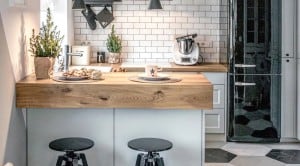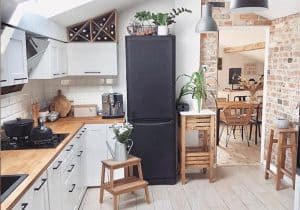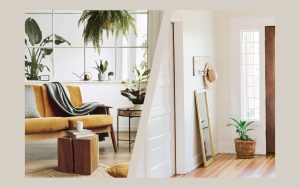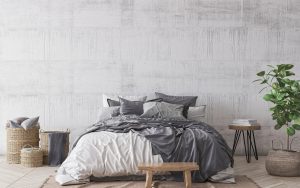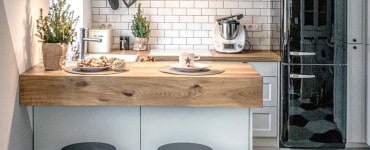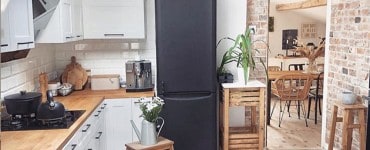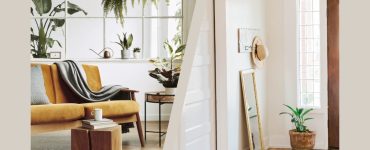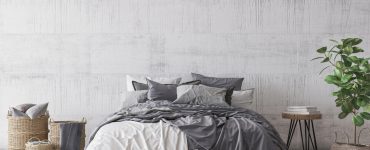If you’ve ever considered redecorating your house, chances are you’ve come across Scandinavian Design. Now, before you start conjuring up ideas of plywood flat-pack furniture, Scandinavian design goes far beyond what you’ll find at your local IKEA.
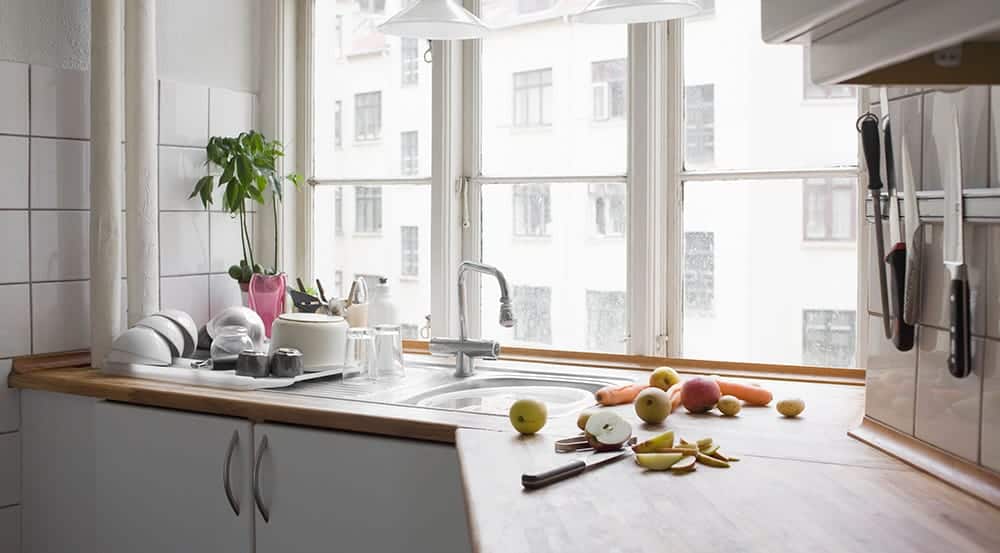
Scandinavian design isn’t a new concept. In fact, it has been around since the 1930s. However, Scandinavian design has been gaining popularity in Western countries in recent years, with Interior Design experts praising it for its simplicity and functionality.
In fact, there are so many reasons why designers and amateurs alike have fallen in love with the Scandinavian style of interior design!
So, what is Scandinavian design and why is everyone so obsessed with it? Let’s take a look at the different elements of this design concept, and why they work so well in any home!
As the name suggests, the Scandinavian design movement originated in the Scandinavian region of Europe. This area, also known as the ‘nordic’ region, consists of the countries Finland, Denmark, Iceland, Norway, and Sweden.
The style was based on the styles that are featured heavily in the average Scandinavian home. The climate in these Nordic countries is very different from what you’d find anywhere else in the world.
Scandinavian countries are both cold and temperate with an average temperature of around 40 degrees Fahrenheit (or 6 degrees Celcius), and this is reflected in their design choices. The Scandinavian interior design incorporates a feeling of warmth, relaxation, and comfort to counteract the cold and sometimes harsh climate.
Scandi winters are no joke, and neither are their design ideas!
Scandinavian design consists of a few very unique and very important elements. When combined correctly, the end result is a visually relaxing and functional living space.
The most basic things to consider when coming up with a Scandi design are color, materials, lines, and light. Essentially, you want to balance a functional and minimalist room with a feeling of comfort.
So, which elements are essential when it comes to producing a Scandinavian interior?
Light color palette
One of the most important parts of Scandinavian design is getting the color palette right. If your color palette has a ‘Scandi’ influence, it will help tie the rest of the room together.
Scandinavian houses use lighter, muted color palettes to create a feeling of cleanliness. Because the winters in this part of the world are often very long, the lighter colors help to brighten up the home.
Keeping the colors of your home light and neutral will also create cohesion between each room. This can make your house feel more like one, large, united space, instead of multiple rooms under the same roof.
Another major benefit of a lighter color scheme is the relaxation you’ll feel. The human brain prefers patterns that it can easily identify, so having your whole house painted all in neutral colors will make you feel calmer.
Light, neutral color schemes never go out of fashion, so if you do it right, you’ll never have to change it!
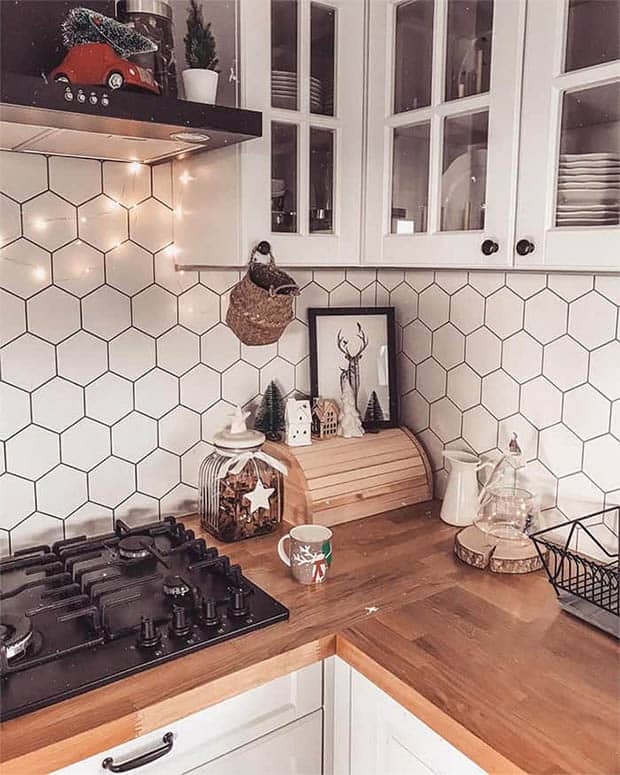
Natural Wood
Wood is an important element in Scandinavian design. Using wood on the floors and walls helps bring a more natural feel to your home, and has a positive effect on your emotions.
However, you can’t just use any type of wood if you want a Scandinavian house. In keeping with our light color scheme, only lighter woods should be used.
Woods such as beech and pine are common in Scandinavian design, as they are light, neutral, and muted. Ash is becoming an increasingly popular choice as well, and in recent years, bamboo has been growing in popularity. You can even combine wood types to create the perfect look for your home.
These light woods can make a small space feel larger, and contribute to the overall calm and relaxing vibe you’ve created with your paint choices.
Because wood is so prominent in Scandinavian design, you should avoid using wall-to-wall carpets. However, if you can’t live without the feeling of a soft carpet under your feet, consider laying down some Scandinavian inspired rugs.
Clean Lines
Scandinavian living is all about clean, uninterrupted lines. There’s no need for unnecessary decorative accents in Scandi design, as they don’t contribute anything to the functionality of the space.
This is probably the most important element of Scandinavian design. Strong, solid, uninterrupted lines allow your mind to focus on the simple decorative accents of the room instead of the walls.
Scandinavian furniture also follows this rule. The lines of tables, chairs, couches, and even bedside tables are clean, solid, and have minimal decoration. Furniture design should not be overlooked, as overly ornate pieces of furniture can throw off your entire design!
Natural Light
Because it rains a lot in Scandinavian countries, lighting is key. Allowing natural light into the home helps create a light, bright, and relaxed atmosphere in your living spaces.
The easiest way to ensure you’re getting abundant natural light is to limit window treatments such as curtains and blinds. If you’re building a new home or renovating your existing home, consider using large, wide, windows in your home.
Skylights are also a common feature in Scandinavian interiors, as they allow the light from above to enter your living space. Some homes in Scandinavian countries are sandwiched between others, so windows aren’t available. In cases like this, skylights are the perfect solution.
If you don’t have much natural sunlight available where you live, ensuring you use proper lighting in your home is crucial. Using light bulbs with warmer tones will replicate sunlight, which is much less harsh than bulbs with blue lights.
Using pendant lamps in the bedroom and communal living areas of your home is also common in Scandinavian design. Because these lights hang lower, they aren’t so direct, which can be helpful for headache and migraine sufferers.
Comfortable Textiles
There’s nothing better than snuggling up with a warm blanket in front of a fireplace when it’s cold outside. Because it’s so cold in Scandinavian regions, cozy and comfortable textiles are extremely important.
When choosing blankets, rugs, cushions, and bedding for your Scandi interior, always choose natural materials. Warm textiles made from wool, cotton, fur, and linen are a staple in Scandinavian design.
When it comes to textiles, the more comfortable the better. Even if you’re not using these blankets or cushions, seeing textiles that look cozy automatically creates a sense of comfort.
In Nordic countries, this concept is called “Hygge” (hoo-ga). It means “well-being” in Danish and is more of a way of life than a design choice. Essentially, comfort is the key to happiness and relaxation, so it’s essential to remember this when designing a Scandinavian space.
Your textiles should match the rest of your house: neutral, muted, and light. However, many design experts agree that this is one area you can be lenient with. Adding a pop of color here and there is up to you, but its always safer to stick to neutral colors.
Functionality
Scandinavian design is not only about the look, but it’s also about functionality. Ensuring your home is easy to live in is more important than how good it looks. To put it simply, your home should have both form and functionality, not just one or the other.
Designers have a saying: “form follows function”. Basically, you should always make the most of your space to make it as usable as possible before even considering how you’ll style it.
The first thing to consider is a functional layout. Your floorplan should be designed in a way that increases comfort and makes it easy to move around. For Scandi houses, your floorplan should be relatively open, with nothing obstructing your line of sight.
Another major element of functional Scandinavian design is storage. Storage is an essential part of functional design. In Scandinavian culture, there’s nothing worse than a cluttered room, so having somewhere to keep your knick-knacks is vital!
Simple decor
Any styling element in a Scandinavian home should add value to the room. This can be value added to the functionality of the room, like a nice basket for added storage. This can also be value added to the atmosphere of the room.
Scented candles are a simple piece of decor that can help make any room cozier. Each scent can evoke a different feeling, allowing you to change the scent to match the emotion of the room.
You can also find scented candles that look amazing too! As Scandinavian design favors a more minimal approach, even simple neutral candles in clear jars can look great in your space. For an added wow factor, consider using candles with a wooden wick, as they will smell like a fireplace as they burn.
Wall mirrors will help your space feel larger by reflecting the opposite side of a room. This can be especially helpful for smaller homes and rooms. Again, clean lines are important when choosing decor, so opt for a mirror with minimal decoration.
Plants are an excellent decor piece to include when designing a Scandinavian room. Indoor houseplants with lush, green foliage can help soften a room and bring nature back into your life.
The natural greens of most houseplants can also add some color to your home, without interfering with your design. Plus, as an added bonus, plants are amazing for your health.
The more plants you have, the cleaner your air will be. When choosing houseplants for your Scandi interior, go for plants with clean lines as well. The Bird of Paradise is a popular plant for Scandinavian decorating, as they are lush with clean, straight lines.
Another popular plant to consider is the Monstera, as it is large and goes with anything! The more natural items you can use in your decorating, the better!
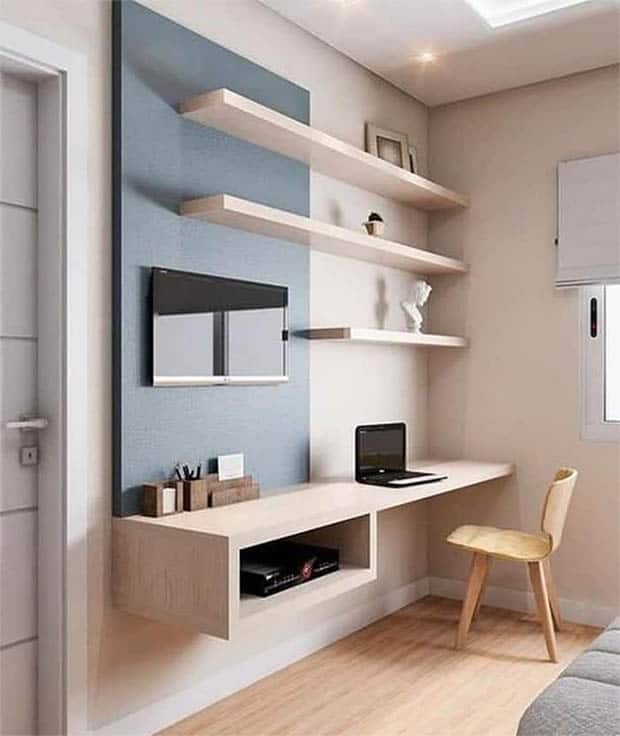
More people are enjoying the Scandinavian design than ever before for the way it makes their home shine but also how it brings them functionality. What are some other reasons people are flocking to this style?
With its focus being on craftsmanship, clean lines, and materials, Scandinavian design remains as relevant in today’s market as it did when it exploded on the scene back in the day. It is created as a way to maximize the light and bring in spaces that are free from any type of ornamentation or clutter.
But what makes this style so sought after among the population?
Minimalist
Scandinavian design was credited with heading the minimalist movement as the two so seamlessly fit together with the products denoting a sleek simplicity offering very few adornments. Some may see a Scandinavian design and view it as ‘bare’ in appearance. What the style lacks in furnishings or interiors can be made up for by the personal stamp of accessorization including art, rugs, pillows.
Optimism
Scandinavian design can be viewed as optimistic with its light, natural aesthetics. There is no fear of an oppressive, dark style dragging down the interiors because the Scandinavian style allows for the short days with its appeal lifting the overall mood of the rooms.
Timeless
The popularity extending for nearly a century contributes to the evidence of Scandinavian design timelessness. This style is not one that will go out with the next gaudy fad. The idea of decorating once and not having to do it again means using the Scandinavian design. The modern style is classic and understated.
Functional
Scandinavian design allows for pieces that perform multi-functional duties which are ideal for apartment dwellers or those who live in smaller spaces. Multi functionality is particularly common among many of the wooden furniture pieces that are true to the style.
Organic
A big draw for Scandinavian design is its organic, natural emphasis with many designers taking their inspiration straight from nature using materials including teak.
Scandinavian design withstood the test of time due to the versatility of its minimalistic design, the appeal of the multi functionality of the furniture pieces that it provides, and the overall quality of the brands that are offered. Each piece that is placed in a Scandinavian home gives immediate visual pleasure but also presents practicality that is necessary for everyday living.
It’s simple to jam pack a room with useless clutter, but in a Scandinavian home, you will find a sense of functional elegance. This is why the Scandinavian design is so popular, classic, modern, and able to go on through generation to generation.
There is a lot of debate on what the difference between Scandinavian and Nordic design is. Generally, Scandinavian design is seen as more minimalistic, while Nordic design incorporates more natural materials and patterns. However, there is no set rule and the two terms are often used interchangeably.
Scandinavian design rose to popularity in the 1950s and 60s, when designers like Arne Jacobsen and Hans Wegner created simple, elegant furniture that was well-made and affordable. The style is still popular today, with many people looking to achieve a Scandinavian aesthetic in their homes.
Nordic design is said to have its roots in the traditional folk art of Scandinavia and Northern Europe. It features natural materials like wood, wool and stone, as well as traditional patterns and motifs.
Scandinavian design style consists of designs that originated from the three countries of Scandinavia – Norway, Sweden, and Denmark. Over time, designs from other Northern European countries like Finland and Iceland have also fallen under that umbrella. The style is characterized by minimalistic and functional objects and spaces, with cues from taken from nature.
The early 20th century saw design styles like Bauhaus and Dadaism that rejected the ideals of superfluous designs, showcasing wealth. By the 1940s, a series of designs from Scandinavian countries that focused on democratic design began to emerge.
Designs that focused on excessiveness and complexity to display social standing were shunned in favor of functional designs that were available to all of society. These designs focused on comfort and making use of local crafts.
The Scandinavian interior style slowly took over the world from then, emphasizing practical designs that worked through the European harsh winters, making the home as comfortable as possible and bringing nature in.
Though not everyone has to deal with long winters, the Scandinavian style brings about a sense of simplicity and calm, which has made them popular.
So, to style your home in the Scandinavia style, focus on these elements.
Colors
The Scandinavian style uses a mostly light canvas that brightens the spaces. The rooms are usually in muted and neutral shades of off white, gray, blue, etc. The whole space does not use a multitude of colors but instead focuses on three to four key colors.
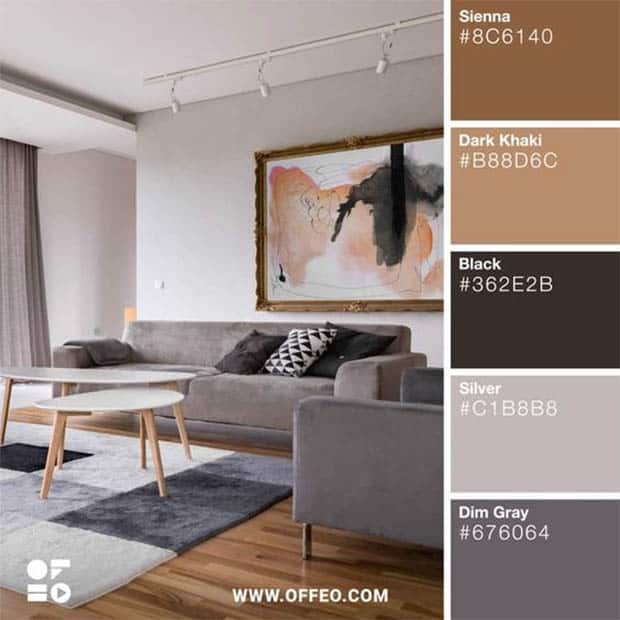
The furniture also follows this palette, with light wood and white being the most common furniture shades. Accent it by throwing in a cushion with a pop of bright yellow or so, and you’ve achieved Scandinavian color zen.
Nature
Nature plays a very big role in this design style. Most furniture is made of wood and is often unpainted, so as to bring forward the beauty of the grain. The painted pieces too are chosen so as to go with the color palette. Plants are another important part of styling the room.
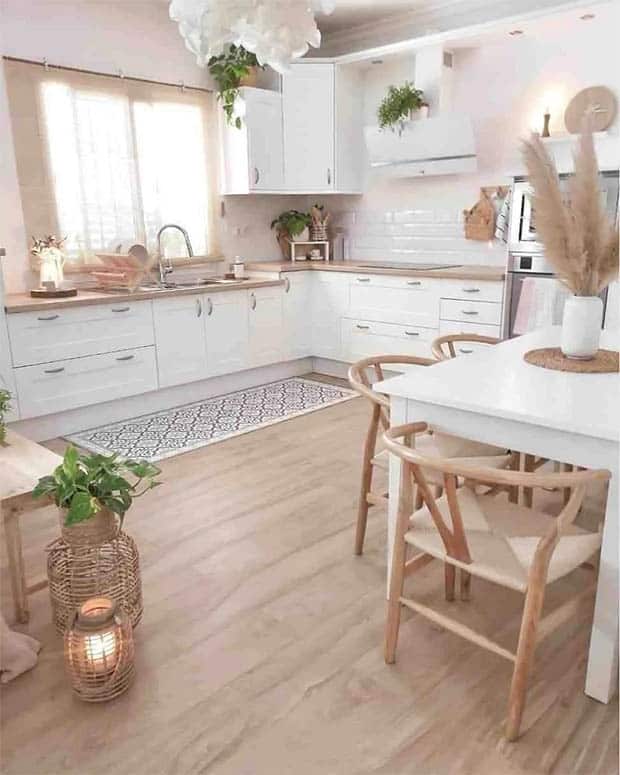
The objective of Scandinavian design has always been to create a cozy and natural retreat, and indoor plants are the best way to do it. Adding plants not only creates the perfect balance to the light and airy environment, but also helps in achieving calm. To take it up a notch, fresh flowers can also be added on a tabletop or two.
However, like all things, the plants and flowers need to be kept in moderation, as overdoing it will take away from the balance created through the other elements.
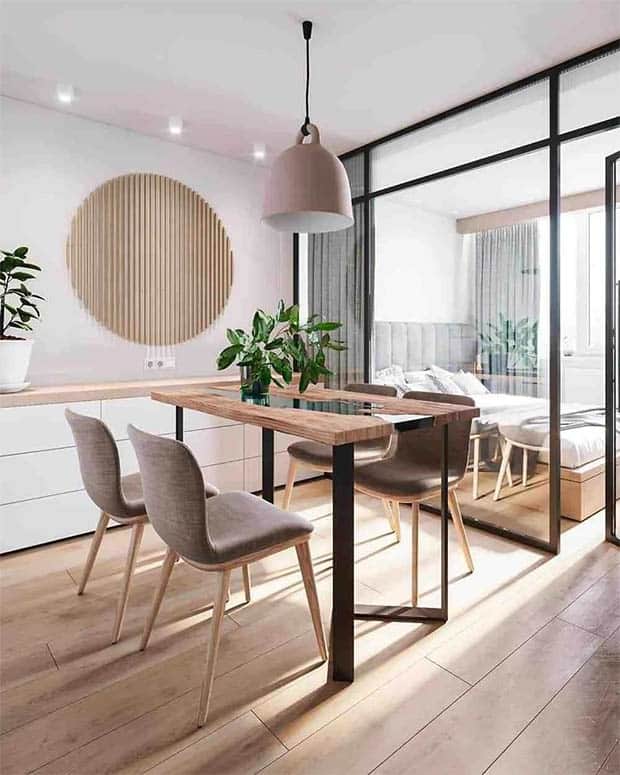
Minimalism
While Scandinavian design is not about getting rid of all your belongings, it does require that the spaces are uncluttered and the designs minimal. The clean, sleek design aesthetic is achieved by using more practical furniture that can be multifunctional. This reduces the unnecessary clutter, and the clean profiles of the furniture make the room appear more visually appealing.
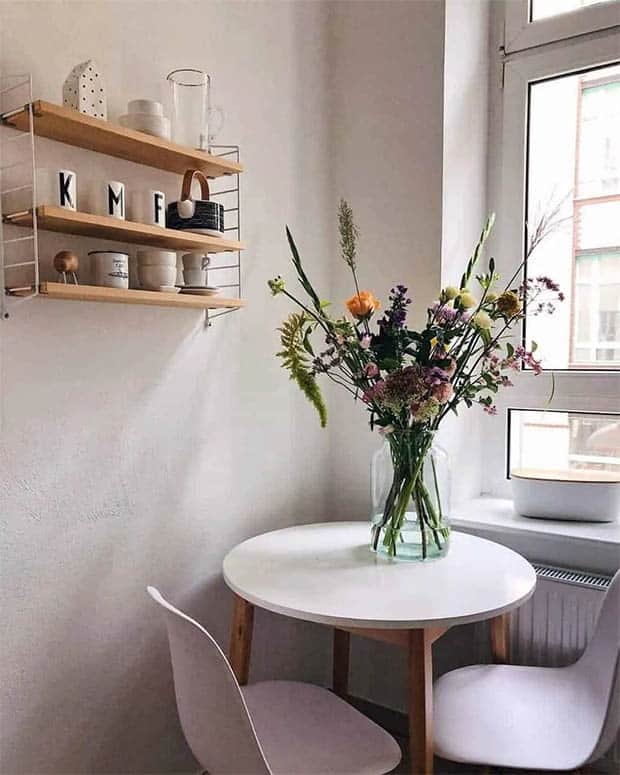
Follow these guidelines to easily create your Scandinavian style room and let your home radiate with happiness and comfort!
There are several principles to adhere to when decorating a home in the Scandinavian design scheme with one of them being light. The region is infamously dark due to their incredibly long winters making for short days and a lack of natural light for residents. Many make up for this by bringing nature into their homes with light, bright color schemes and natural, organic elements.
There is a common theme in the Scandinavian region with their decorating style of bringing nature inside in order to mimic what they’re missing due to the harsh winter climate decreasing the amount of daylight they achieve. This style is timeless in homes across the globe being among one of the most popular styles on the market which has persisted throughout many decades. Here are the key principles pertaining to the Scandinavian design.
Carpet
Scandinavian design has never been one to include wall-to-wall carpet but is more favorable to natural wood flooring in lighter shades throughout the home. There are some residents who put down a variety of different throw rugs that are made of organic materials such as sheepskin but for the most part floors are left bare.
Muted colors
The color scheme used in the Scandinavian home are generally muted in order to bring an understated, light feel to the inside of the home. Recently the color choices are being updated to include more brilliant colors as a way of bringing more depth and boldness into the living spaces. These are including rich reds, oranges, yellows, greens, turquoise.
Simplicity
The Scandinavian design is kept to a minimum as far as the furnishings and the accessories. The minimalism allows for the organic elements of the accessories, the wood, and the color scheme to speak the language of nature to the residents.
Modern
Typical of a Scandinavian home are modern furnishings of warmer wood tones, subtle curves, and that of tapered legs. There is a type of mid-century-modern inspiration to the furnishings which are slim so as not to take up a large amount of space but yet they should be comfortable and inviting to guests. There are very few adornments on the furnishings. It’s very clean. When using accessories there is little ornamentation. Pillows that depict embroidery do so simply but with great detail.
Botanicals
Many Scandinavian designs will incorporate flowers or other types of botanicals as a way of bringing the outside indoors. The living elements provide an added pop of color to the space along with a natural, minimal accessorization.
The main principle of Scandinavian design is a ‘less is more’ approach with a need for the space to be simple but yet practical. The furnishings manage to serve double duty as to not only beautify the space but they have a functionality for the home. If you do the Scandinavian design correctly, you will have accomplished a space that emits an understated elegance with a utilitarian purpose. This ultimately defines what Scandinavian style has come to be known and loved for.
Conclusion
Scandinavian design is not only gorgeous to look at, but it’s also amazing to live in. Creating functional spaces with a relaxing atmosphere will ensure that Scandinavian design will never go out of fashion.
Although this style might not be for everyone, the elements of nature, light, and relaxation are appealing to most.
When it comes to designing any livable home, function should always come before form. Scandinavian design takes this concept and embraces it, creating a balance of form and function not often seen in interior design.
As long as you’re including the elements we discussed, your home is going to look amazing for years to come!


